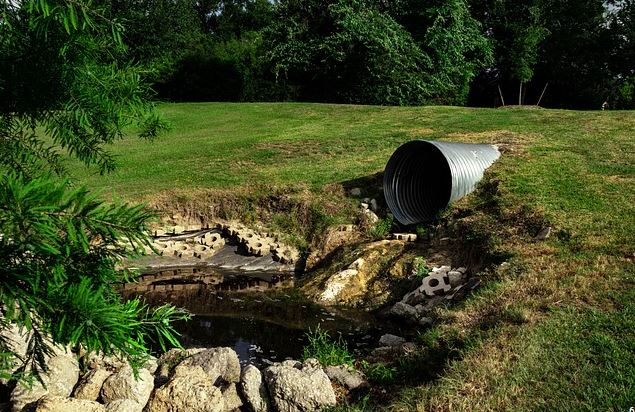Get ahead with essential tips for drainage system design. Avoid costly water damage and ensure a reliable, efficient setup with our expert guidance. When it comes to civil engineering projects, one crucial aspect that often gets overlooked is the design of the drainage system. Whether you’re working on a residential, commercial, or industrial project, a well-designed drainage system is essential for ensuring the longevity and functionality of the entire infrastructure.
ESSENTIAL TIPS FOR DRAINAGE SYSTEM DESIGN
In this blog post, we will explore some essential tips for drainage system design that can help you create an efficient and sustainable solution for your project.
Understand the Site and Its Environment
Before diving into the drainage system design, it’s crucial to have a thorough understanding of the site’s topography, soil type, and climate conditions. Assess the potential sources of water, such as rainfall, runoff from neighboring properties, or underground springs. This knowledge will help you tailor the drainage system to suit the specific needs and challenges of the site.
Proper Site Grading
Site grading plays a significant role in effective drainage. Ensure that the site is appropriately graded to allow water to flow away from buildings and other structures. The slope should be carefully calculated to prevent water from pooling in undesirable areas. Utilize CeedCivil tools to accurately calculate and optimize the site’s grading for an efficient drainage solution.
If you need a drainage system designer You can contact us here: https://ceedcivil.com/structural-engineering/
Implement Sustainable Drainage Systems (SuDS)
Sustainable Drainage Systems, or SuDS, have gained popularity in recent years due to their environmentally friendly approach to managing surface water. SuDS techniques include permeable pavements, green roofs, rain gardens, and detention basins. These methods not only mitigate flooding and control water runoff but also enhance biodiversity and improve the overall aesthetics of the site.
Size Drains Appropriately
Correctly sizing the drains is crucial for efficient drainage. Undersized drains can lead to water backups and flooding, while oversized drains may be cost-inefficient and lead to debris accumulation. Use hydraulic calculations and consider potential future developments or increased rainfall intensity to determine the appropriate drain sizes.
Consider Emergency Overflow Provisions
In extreme weather conditions, drainage systems may become overwhelmed. To prevent damage and ensure safety, incorporate emergency overflow provisions in the design. These can include overflow pipes or emergency storage areas that divert excess water away from critical structures.
Think Long-Term
Drainage systems are long-term investments, and their design should reflect this. Consider the maintenance requirements and the longevity of materials used. Opt for durable and corrosion-resistant materials that require minimal upkeep. A well-maintained drainage system will save on future repair costs and ensure its continuous effectiveness.
Incorporate Water Quality Management
Drainage systems not only manage water quantity but also water quality. Implement techniques to treat and remove pollutants from the runoff before it enters natural water bodies. This may include filtration systems, oil and sediment separators, and vegetated swales. A water quality management plan is essential for preserving the health of the local ecosystem.
Ensure Accessibility for Maintenance
Regular maintenance is essential for keeping the drainage system in optimal condition. Design the system with accessibility in mind, ensuring that inspection chambers, manholes, and other critical components are easily reachable. This will facilitate routine inspections and maintenance, improving the overall longevity of the drainage system.
Integrate Smart Technology
Advancements in technology have led to the development of smart drainage systems that can monitor and control water flow in real time. Consider integrating sensors, remote monitoring systems, and automated controls to enhance the efficiency and responsiveness of the drainage system.
Obtain Professional Guidance
While these tips provide a general framework for drainage system design, it’s crucial to collaborate with experienced civil engineers and drainage specialists. Their expertise and knowledge can help fine-tune the design to meet the specific requirements of your project.
In Conclusion
A well-designed drainage system is an indispensable component of any civil engineering project. By understanding the site, incorporating sustainable techniques, proper sizing, long-term planning, and embracing technology, you can create an efficient and resilient drainage system that will withstand the test of time. Always prioritize the health of the local environment and seek professional guidance to ensure the success of your drainage system design.
For more civil engineering resources and tools, check out CeedCivil https://ceedcivil.com/structural-engineering/, a leading platform for civil engineers to streamline their projects and enhance their designs with cutting-edge technologies and software solutions. Happy engineering!

